With this project I attended the 37th National Student Research Conference (OTDK),
in the Art and Art Theory section,
where I achieved the 1st place of Photography 1 category.

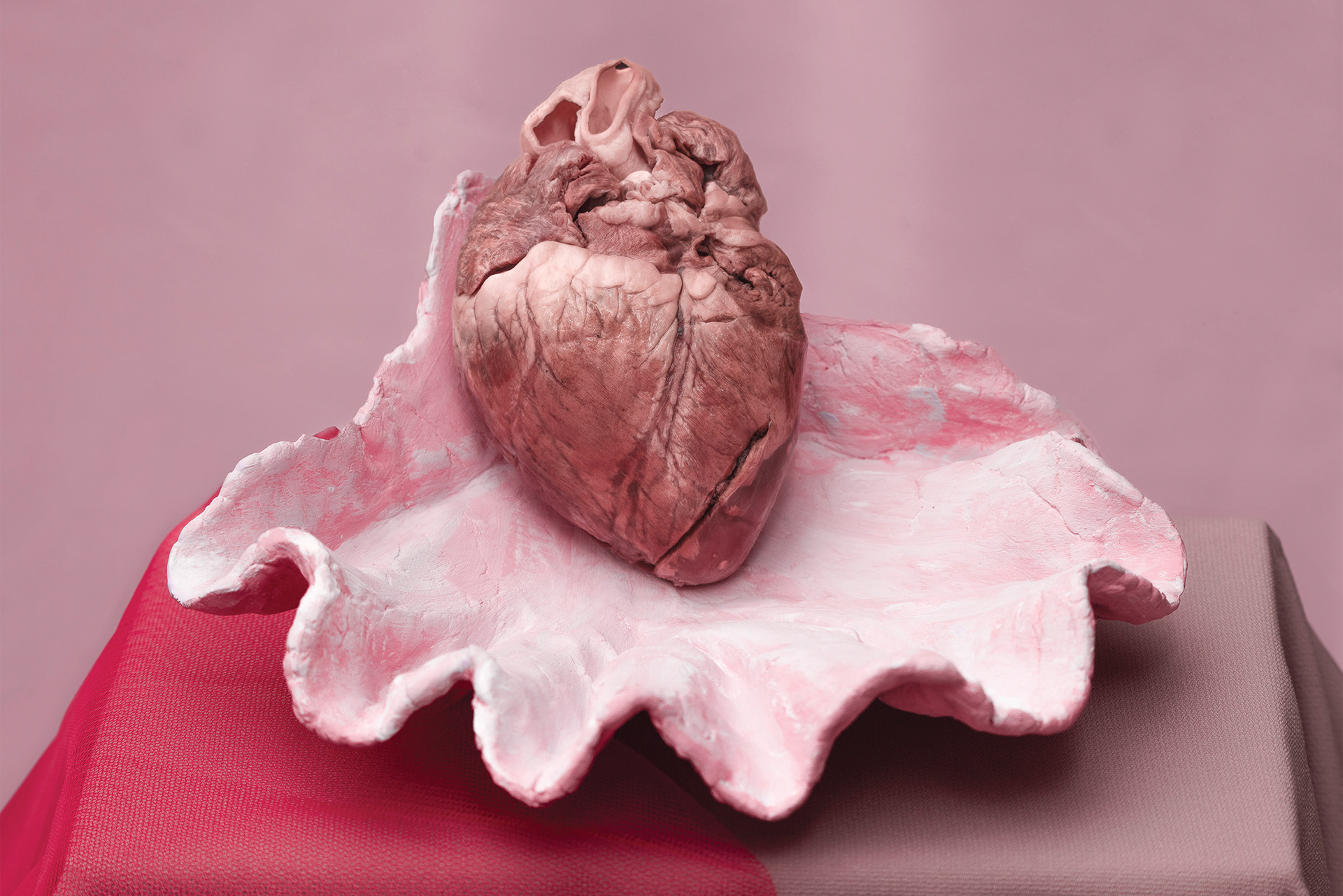

How can we incorporate still lifes in contemporary photography?
Can they be used to address current problems?
Can they still be of lasting value in the 21st century?
In my work, I sought to answer these three questions.
By examining these questions, I have created three photographs.
What connects them; they are monochrome pink still lifes, with animal remains as their central element. The still lifes are static compositions, reflecting small but deeply meaningful aspects of life through different symbol systems.
Through a conscious selection of components, still life can not only provide a visual experience but also stimulate intellectual interaction.
The grotesque aesthetic creates narratives that can capture and provoke the viewer's attention.
Still lifes can thus reflect on collective memory and social reality.
If you would like to read more about the creative process and short research I did while developing the project, you can see the flipbook version here:
(magyar verzió / hungarian version)
(english version / angol verzió)
Natura Morta I.
When choosing the title, I tried to keep it short but expressive.The term 'natura morta' means 'still life' in Italian, but in a literal translation it can be understood as 'dead nature'. I find it interesting that while the majority of germanic languages associate the concept of life with still life, the majority of latin and slavic languages associate the meaning of death with it. I feel that the term "dead nature" more accurately reflects the theme of my work, which is why I chose to use the Italian term.
An important element of the first photo is a severed pig's head. The head and the entrails are contrasted by the background, the pink tablecloth, the flowers and the sculptures in the shape of a woman's body. I took the dolls apart and painted them pink along with the female body and head sculptures. I use these as symbols of femininity, womanhood, social ideals of beauty. I filled the hollow, "empty" female head with the entrails of a pig, reflecting on the social constructions of female identity and roles, the valorisation of external appearance over internal values.
The contrast of offal and plastic reinforces this dissonance. The plastic objects (bodies, heads, legs), which can survive for millions of years, i.e. cannot perish, are juxtaposed with the decomposing remains of the dead animal, creating a grotesque effect, reflecting the transience and perishability of the body. Plastic, as an artificial material, suggests durability while being separated from life, while flesh, as a decomposing material, is associated with life and mortality. The meeting of these two materials creates a contrast that reflects the gap, the duality, between the artificial beauty and the real, ephemeral body.These also symbolize mental or emotional emptiness, which is further emphasized by the pig's head as a representation of life's brutal reality.
With pink flowers in a vase, a pink tablecloth, and a matching background, the image plays with the formal solutions of classic still lifes while provocatively reflecting on social norms and modern life.
Enjoy some behind the scene shots of the process:
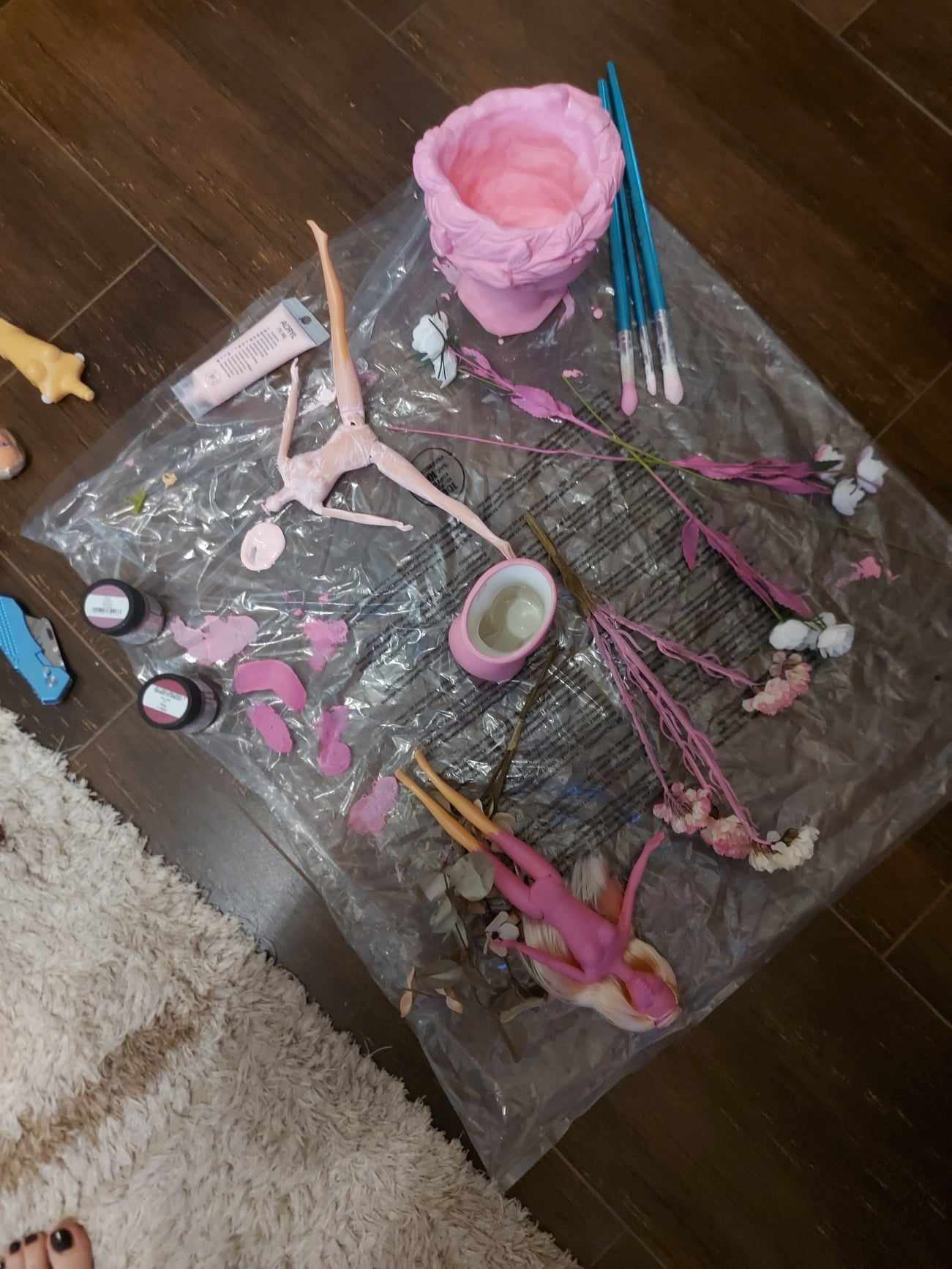

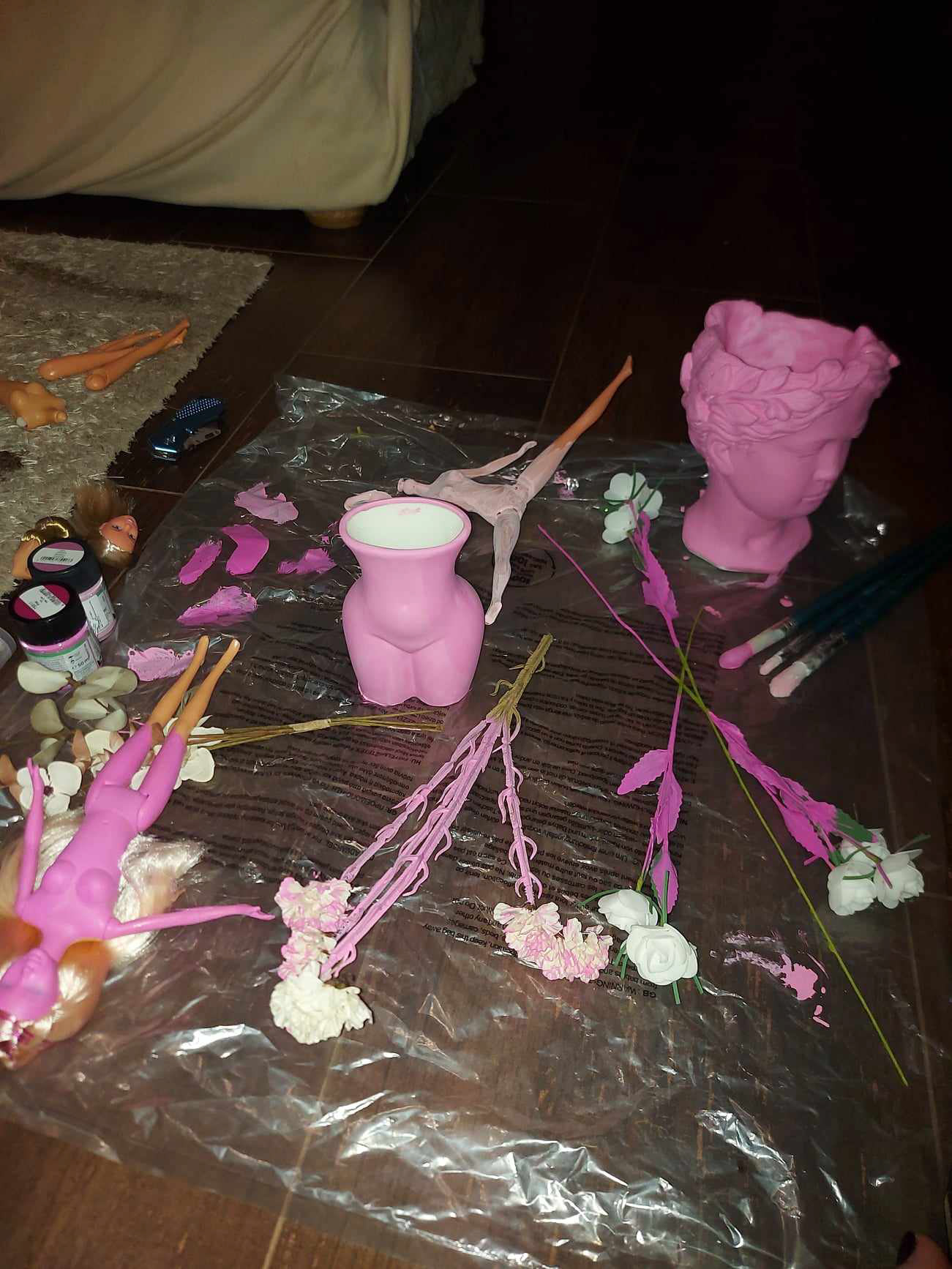

Natura Morta II.
The second still life shows the heart of a dead pig in the shape of a shell I made from clay, against a pink background.
The shell is a soft, refined element in the picture, while the raw appearance of the pig's heart contrasts with it. The pig's heart can be interpreted as an analogy for the pearl developing in the shell. The pearl is a symbol of purity and beauty, while the pig's heart is a symbol of lifelessness, transience and rawness in my work. Replacing the pearl with a heart radically changes the meaning. It confronts the recipient with the reality of beauty and life, with transience.
The heart refers to the vulnerability and fragility of the body, a symbol of emotion, a source of life. In this context, as a heart plucked from a dead body, it has a grotesque effect, a duality of meaning. The formulation as still life reinforces the meaning, a means of juxtaposing death and life, as in vanitas still lifes.
Behind the scenes:
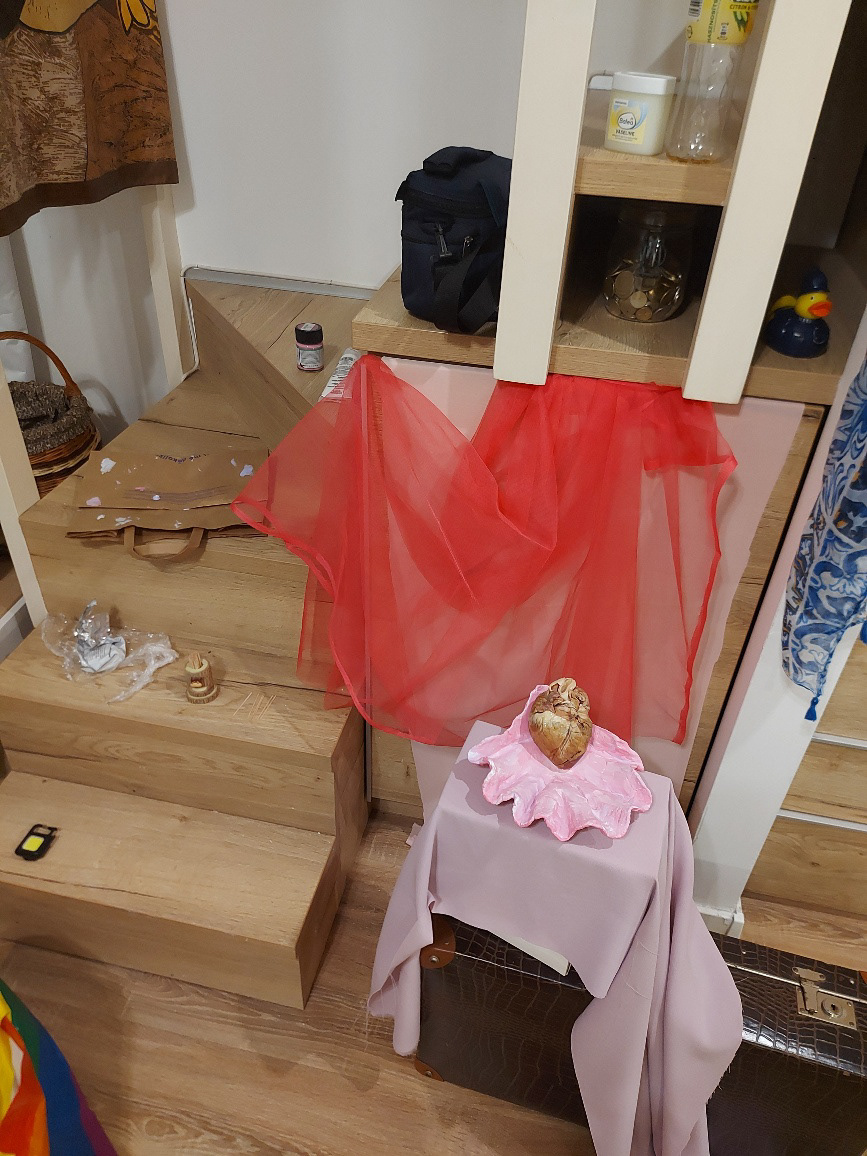
Natura Morta III.
The third idea was implemented in two ways. The central element of the pictures is a chicken leg.In one photo, the chicken foot is shown with a bracelet and rings on its "fingers", and in the other photo it is covered with glued-on gemstones. The classical composition contrasts with the dead chicken's feet.
In the 21st century, how do we define and interpret symbols of wealth and power in a social and societal context? Jewellery and gems - often status symbols of status, and money - on the leg of a dead animal reveal that the value and meaning we assign to an object are strictly social conventions. They do not always reflect the real content, they highlight the absurdity of social hierarchies and customs.
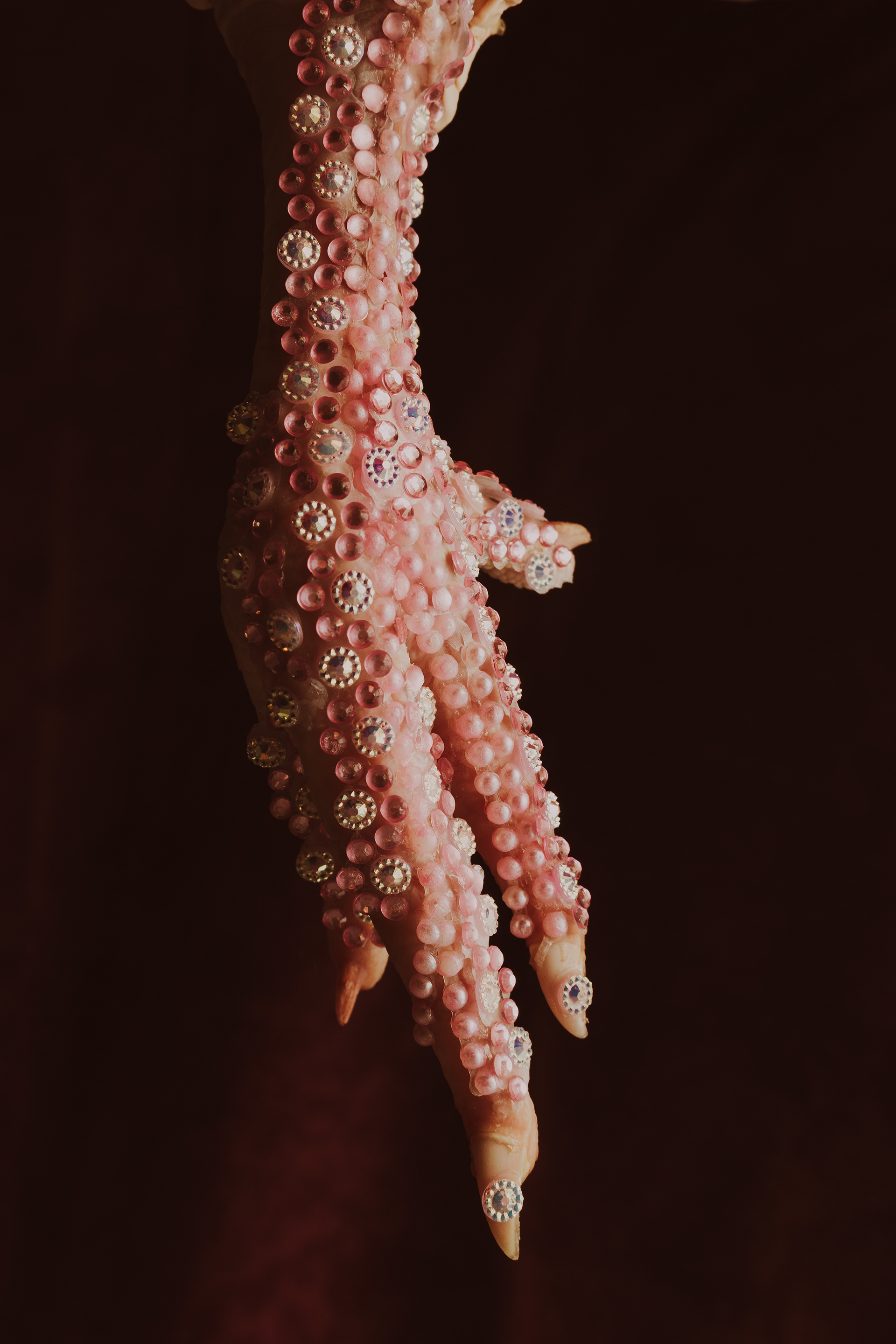
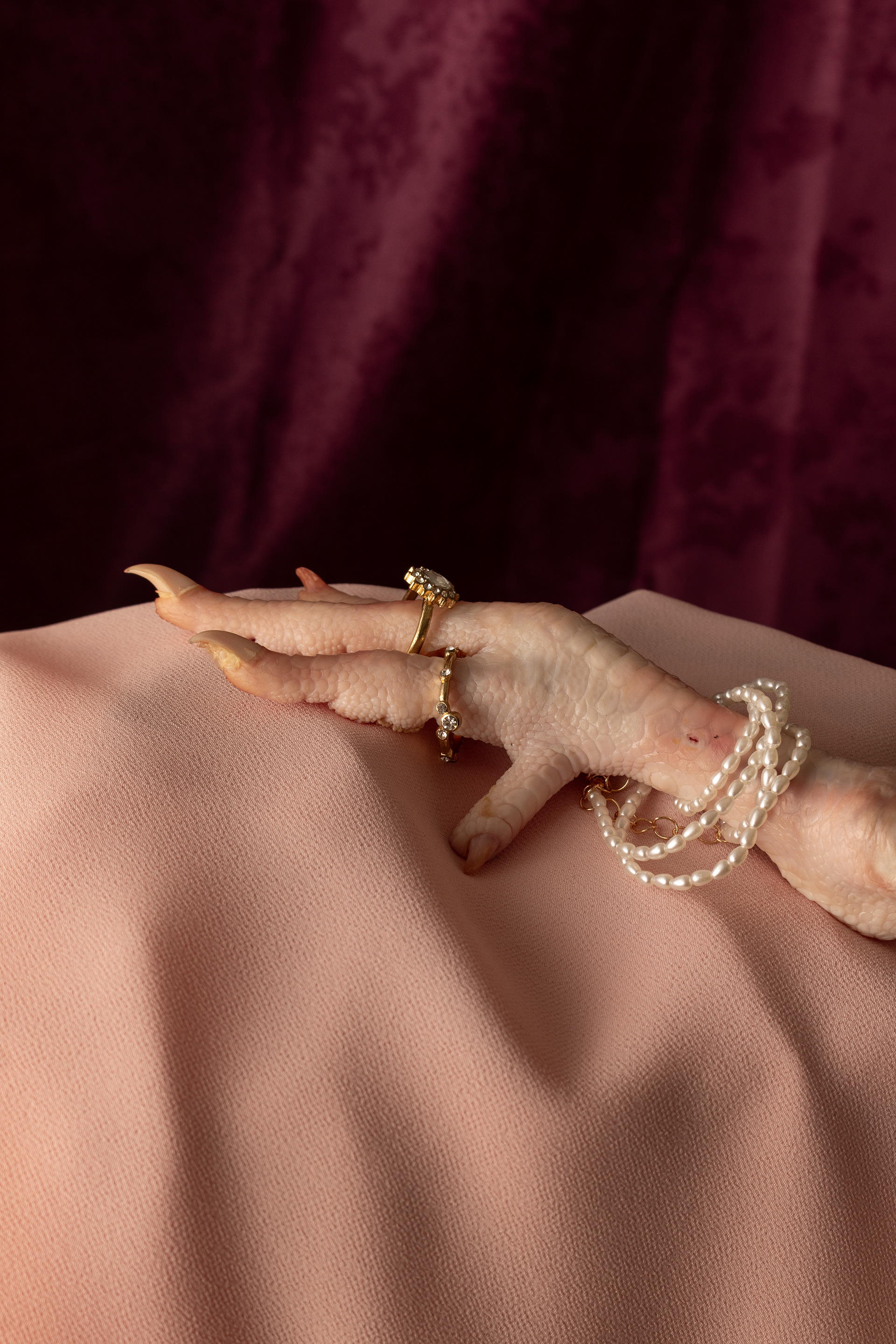
Anthropomorphism - the attribution and comparison of human qualities, habits and meanings to animals, objects and things - is an important tool of the image. It helps us to recognise that we tend to view and interpret the world through our own filters, ignoring other perspectives. The notion of beauty is not only linked to aesthetics, but also to social and cultural constructs and concepts that constantly distort and shape our lives, their values and norms - for example, what people do with their natural bodies, how they shape them under the pressure of society.
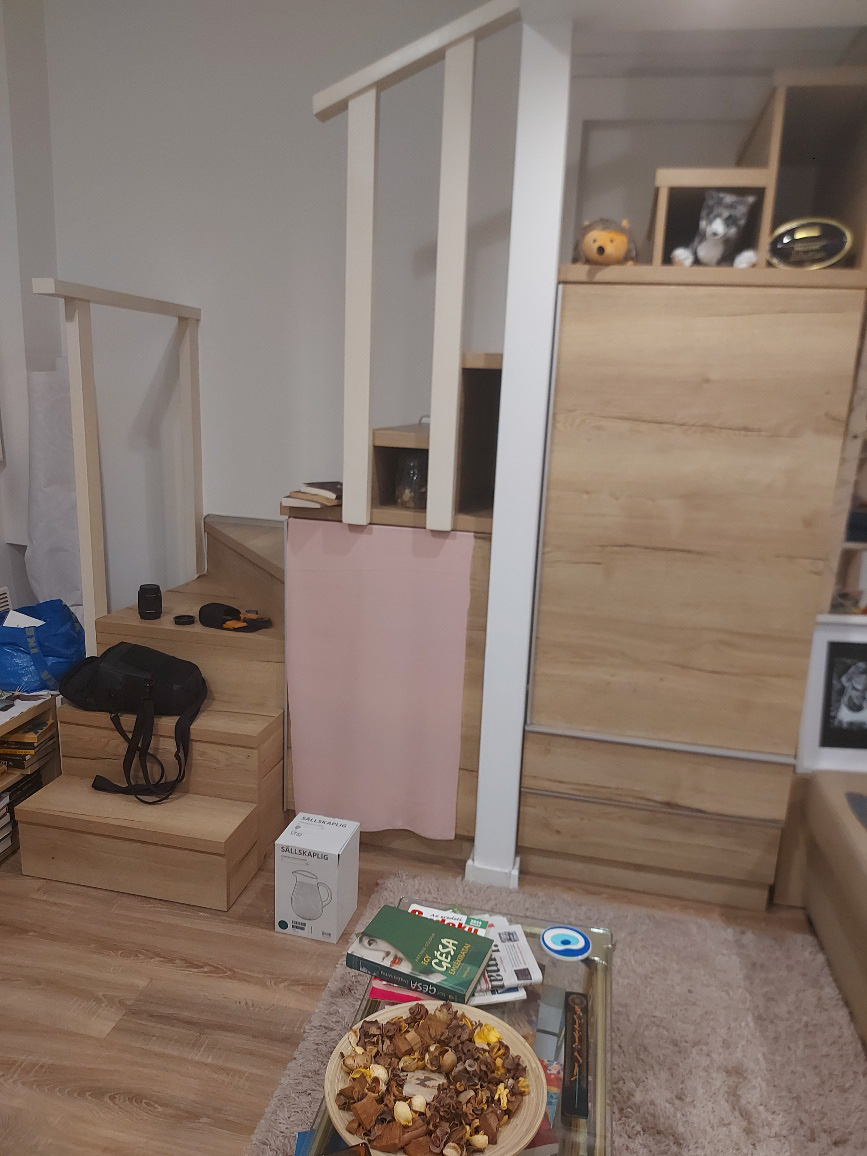
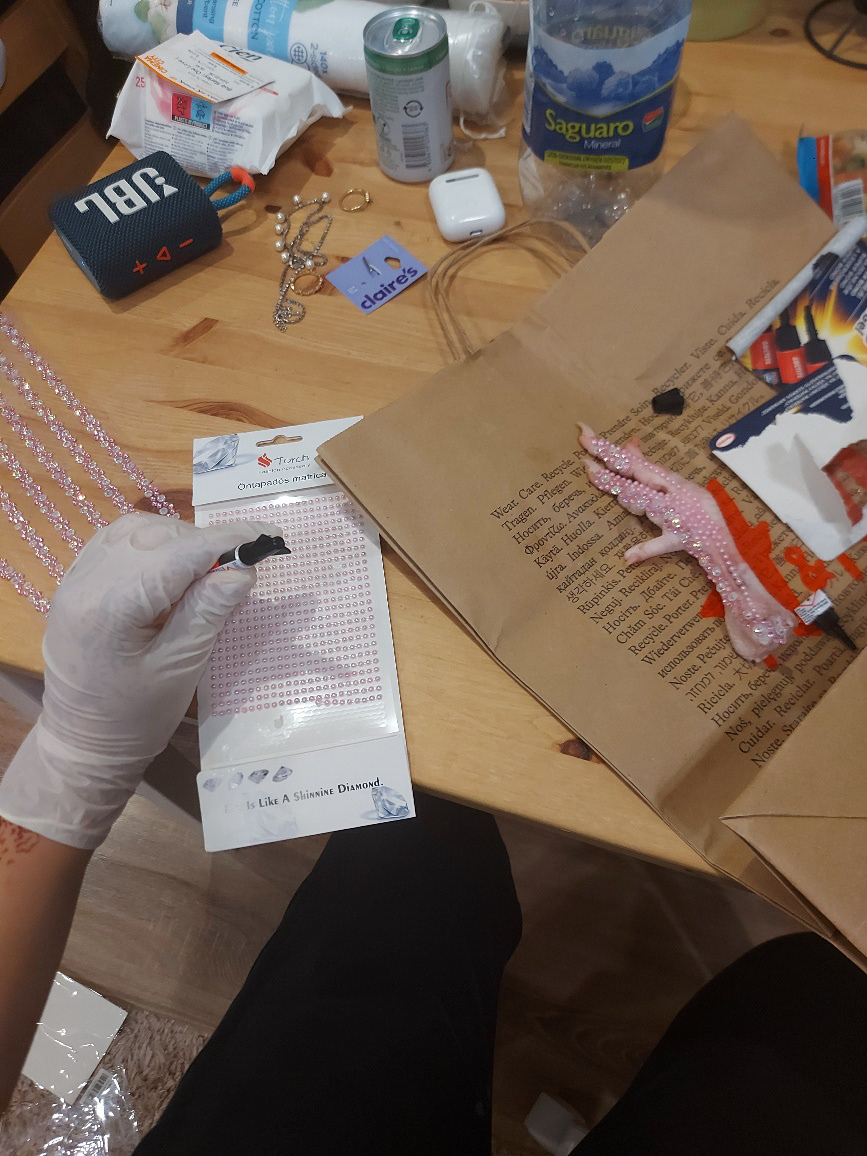

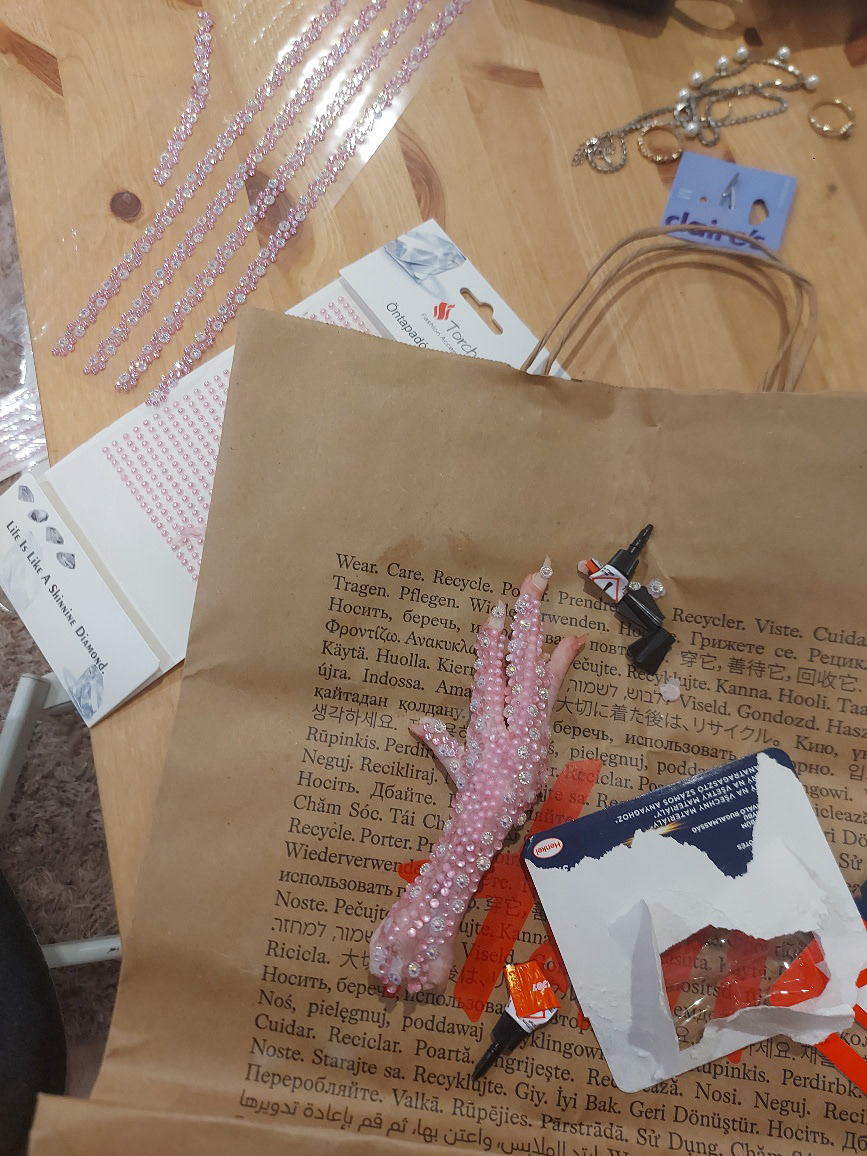
During the creation of these photographs, my vision gradually evolved.While many people may consider the genre of still life to be monotonous or boring, I have discovered its diversity.
The process has allowed me to explore the complexities and interpretations behind seemingly simple motifs, and still life has opened up a new perspective for me.Still lifes in contemporary art are not simply visual creations; they reinterpret the past and raise questions in the present, giving relevance and value to the genre.
They can live on as a means of expression where classical compositions meet themes that are relevant to the present.
With the values and messages of the genre in mind, contemporary adaptations of still lifes are able to explore topical issues and raise provocative questions.


